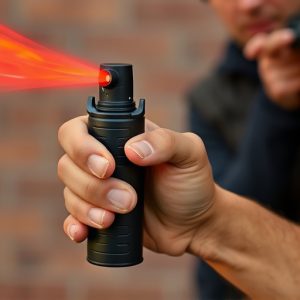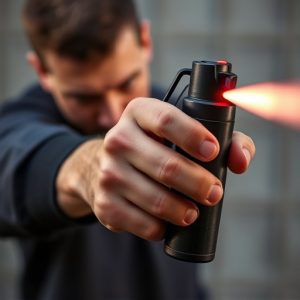Military Grade Pepper Spray Formulas: Riot Control Strategies and Ethical Implications
Military-grade pepper spray formulations, designed for riot control, contain capsaicin compounds lik…….
Military-grade pepper spray formulations, designed for riot control, contain capsaicin compounds like oleoresin capsicum (OC) that cause burning sensations and disable individuals temporarily. These advanced formulas include preservatives and stabilizers for reliability. Used globally, these sprays help law enforcement restore order during civil unrest, but their deployment requires careful consideration of crowd dynamics, environmental conditions, and ethical implications to balance public safety with the right to peaceful assembly. Proper training and psychological management are crucial to minimize risks associated with these non-lethal agents.
In the realm of public order maintenance, military-grade pepper spray formulations have emerged as a key tool in riot control strategies. “Understanding Military Grade Pepper Spray Formulas: Composition and Effectiveness” explores the intricate chemistry behind these powerful agents, delving into their active ingredients and impact on human physiology. This article also examines “The Role of Inflammatory Sprays in Riot Control,” considering tactical deployment, strategic considerations, and the evolving landscape of public safety. Additionally, it tackles “Safety and Ethical Implications,” raising awareness about responsible use and addressing concerns surrounding civil liberties.
- Understanding Military Grade Pepper Spray Formulas: Composition and Effectiveness
- The Role of Inflammatory Sprays in Riot Control: Strategies and Considerations
- Safety and Ethical Implications: Using Pepper Spray for Public Order Maintenance
Understanding Military Grade Pepper Spray Formulas: Composition and Effectiveness
Military-grade pepper spray formulations are designed with a balanced composition, combining various active ingredients to achieve optimal effectiveness during riot control scenarios. These powerful agents contain capsaicinoids, the primary compound responsible for the burning sensation associated with chili peppers. The most common and potent capsaicin derivative used is oleoresin capsicum (OC), which can be found in varying concentrations within these sprays.
The formula’s effectiveness lies not only in the concentration of OC but also in the addition of other components, such as preservatives and stabilizers, ensuring longevity and reliability under stressful conditions. These advanced formulations offer a strategic advantage by inducing temporary blindness, respiratory distress, and intense pain, thereby enabling law enforcement to control and disperse crowds quickly and efficiently.
The Role of Inflammatory Sprays in Riot Control: Strategies and Considerations
Inflammatory sprays, particularly those containing military-grade pepper spray formulas, play a significant role in riot control strategies worldwide. These non-lethal weapons are designed to temporarily incapacitate individuals involved in civil unrest or violent demonstrations, providing critical time for law enforcement to restore order. The effectiveness of these sprays lies in their ability to induce pain and irritancy, leading to compliance and dispersion.
When employing inflammatory sprays, considerations are paramount. Factors such as crowd dynamics, environmental conditions, and the specific needs of the situation determine the choice of spray type, concentration, and deployment method. Training for officers using these agents is essential to ensure safe and responsible application, minimizing risks to both public safety and officer well-being. Moreover, the psychological impact on bystanders must be carefully managed to prevent further escalation.
Safety and Ethical Implications: Using Pepper Spray for Public Order Maintenance
The use of inflammatory spray, particularly military-grade pepper spray formulas, in riot control and public order maintenance has raised significant safety and ethical concerns. While it is an effective tool for temporarily disabling rioters and dispersing crowds, its non-lethal nature sometimes overshadows potential risks to public health and safety. The active ingredient, capsaicin, can cause severe discomfort, breathing difficulties, and even long-term health issues in vulnerable populations, including children, the elderly, and those with pre-existing respiratory conditions.
Ethical implications also come into play when considering the misuse or overreliance on such sprays. Law enforcement agencies must adhere to strict protocols and use these agents proportionately and only as a last resort. The indiscriminate deployment of military-grade pepper spray formulas can lead to excessive force, causing unnecessary harm and infringing on civil liberties. Therefore, it’s crucial to balance public safety with the right to peaceful assembly and freedom from unreasonable seizures and excessive force.
Military-grade pepper spray formulas play a significant role in riot control strategies, offering both effectiveness and safety concerns. By understanding their composition and impact, law enforcement can employ these tools responsibly while maintaining public order. Despite ethical debates, when used appropriately, inflammatory sprays can serve as a crucial component in managing chaotic situations, ensuring the safety of both officers and citizens.


